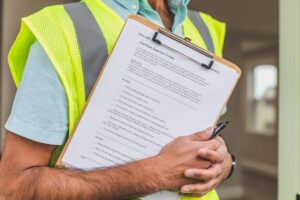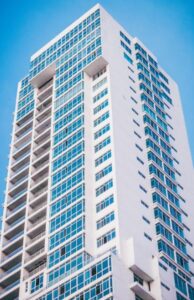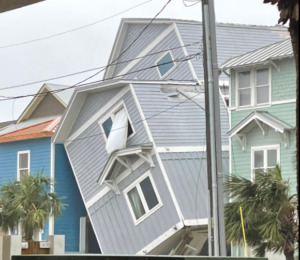As hurricane season enters prime time and rate increases begin showing up on property insurance bills, South Florida homeowners may rightly wonder whether their insurance coverage will protect them if a big one hits.
Patty Harris, who owns a home in West Miami, has seen her insurance premium cost nearly double since 2010 to over $4,000, although during the past two years with Florida Peninsula her rates have been relatively stable, even decreasing a bit, she said.
“I certainly hope Florida Peninsula lives up to their reputation,” said Harris, who switched from Citizens in 2013. “My research showed they are probably one of the more solvent [insurers] but that will only be known when I may need them. … I guess I’m living on borrowed time, like everyone else.”
In South Florida, homeowners typically pay the highest property insurance rates in the state. They are most likely covered by the state-run Citizens Property Insurance Corp. or one of the scores of much smaller, private insurance companies, similar to Florida Peninsula, focused on insurance business in the state. Many of these arose in the past decade to lure homeowners away from the state-run entity. How strong are these insurers?
Industry executives and analysts interviewed for this article said the industry as a whole is the strongest it has been since the hurricane swoon of 2004-2005 and that Citizens, South Florida’s dominant insurer, has never been in better shape. That’s the good news.
Here’s the not-so-good: Nearly 11 years without a major storm battering South Florida means that many of the smaller companies are untested.
Hard dollar figures will never truly reflect the deaths and destruction to South Florida families, homes and businesses in the months and years following Andrew, the Category 5 hurricane that struck 24 years ago this week. But it’s worth noting that these smaller insurance companies have never been through a hurricane like Andrew in 1992, which cost the insurance industry $26.63 billion in today’s dollars. And most of these companies have never experienced a period like the 14 months Florida went through in 2004-2005, when direct hits by Hurricanes Charley, Frances, Ivan, Jeanne, Dennis, Katrina and Wilma cost the industry $41 billion in today’s dollars. Indeed, the Sunshine State has a long history of being beaten up by hurricanes.
The aftermath of Andrew and the later storms led big-name insurers such as Prudential, State Farm and Allstate to pull out or massively scale back their homeowner coverage in Florida’s coastal regions. More than a dozen of the young — and under-capitalized — smaller companies couldn’t withstand the claims deluge after the 2004-2005 storms and went insolvent or were taken over. The survivors, as well as Citizens, upped their rates — in some cases, doubling the premium pain for homeowners, who were also paying up to five storm-related assessments on their bills. Those were the dark days for the industry and consumers.
And today?
“Florida’s property insurance market is more stable and competitive than it has been in more than a decade,” the state’s Office of Insurance Regulation’s newly appointed Commissioner David Altmaier said. “The Office of Insurance Regulation continually monitors insurance companies throughout the year to assess their financial position, review regulatory filings and catastrophe reinsurance programs. These efforts help to protect Florida’s consumers in the event of a disaster.”
Last October, the Office of Insurance Regulation said 67 insurers that participated in its catastrophic stress test had more than the minimum capital and surplus required to respond to three specific, catastrophic storm scenarios, with one of them simulating the four-storm run of 2004. These tests, enhanced in 2015, are meant to model the pathway, destructive power and claims-paying costs of previous hurricanes to anticipate how well companies’ finances would fare following high volumes of post-storm claims. In 2015, each company that was tested passed this rigorous test, Altmaier said, and the OIR is now putting insurers through another annual stress test this year using different scenarios. Results should be released later this fall.
The stress test is just one of its consumer-protection tools in OIR’s box, which also includes reviews of quarterly and annual statements, business plans, disaster recovery plans, exposure changes, management teams and reinsurance levels, said Altmaier, who has worked at OIR for eight years in its property and casualty unit and has held roles such as chief analyst and deputy commissioner.
So why is the industry so much healthier now? The storm-free years enabled insurers and the state to put away billions in reserves.
The Florida Hurricane Catastrophe Fund is an added layer of coverage to help insurers pay claims in the case of a massive event. This year, the state-run fund should have a record $17.4 billion of claims-paying capacity, and it will mark the first time that the fund has more money than it would need to pay out if storms devastated the state, according to a financial report by St. Petersburg-based Raymond James and Associates. The Cat Fund also has an unprecedented $13.7 billion of cash on hand.
For its part, Citizens, founded in 2002 for those who cannot find coverage on the open market, weathered several years of red ink after 2004-2005 storms but has since amassed an unprecedented $7.4 billion surplus.
“We’ve never been, ever in our history, quite as well prepared financially. We currently have about 490,000 policyholders. We used to have, just four years ago, over a half-trillion dollars in insured exposure. Today that’s down to about $140 billion of exposure… Four years ago, if a 1-in-100-year storm would have occurred, we would have required an $11.6 billion assessment [on policyholders]. … Today we could weather a 1-in-100-year initial storm and a 1-in-16-year second storm and we still would not have to assess policyholders,” Citizens CEO Barry Gilway said in a recent WLRN “Sunshine Economy” episode. Citizens holds the largest share of South Florida’s market.
Citizens’ exposure has dropped to less than 500,000 policies, down from a high of 1.5 million in 2011, because many but not all of the small Florida-based insurers have taken on hundreds of thousands of its policies.
These so-called specialist insurance firms — which generally have a narrow focus on a geography or a particular peril — now cover about 60 percent of the state’s market. Most of them have sprouted up since the storms of 2004-2005 and have had a number of years to build reserves. But like the state’s many new homeowners and the houses they reside in, these companies have never ridden out a major storm — and South Florida homeowners interviewed for this article were skeptical about their service once claims time comes around.
“I’m sure my insurer will do just fine. I’m more worried about how much I’ll be paid for any damage done by a hurricane or anything else that may happen to my house,” said Charles Peters, who lives in southern Miami-Dade. “Insurance companies are always your ‘friend’ as long as they are collecting your payments, but as soon as they have to pay anything, they get very nit-picky. If, God forbid, my home was destroyed, I could look for money enough to rebuild half of it by the time their adjusters got done with me.”
The ability of Florida’s young homeowner insurance companies to manage a large catastrophic hurricane is indeed “uncertain” despite the companies’ recent strong financial performance, according to a new Fitch Ratings analysis titled “Florida Homeowners Insurance Market Update: No Time for Complacency Following Hurricane-Free Decade.”
“It’s not a question of if these Florida homeowner specialists will be tested by a hurricane, but rather, when the next catastrophe strikes, will they be prepared to handle a significant increase in claims volume?” Christopher Grimes, a director with Fitch Ratings, said when the report was released.
Overall, the report gives a somewhat bullish outlook on the Florida homeowner insurance market. The quiet seasons since the 2004-2005 storms have allowed the companies to replenish their capital and improve capacity to withstand future storms, the report said.
Chicago-based Fitch Ratings does not rate these small insurers but looked closely at 32 of them for its report; 25 of those were organized after 2005. Many of the small specialist insurers reported favorable profitability and surplus growth in recent years due to the lack of catastrophe losses but would be unlikely to achieve the “A” category in the Fitch Insurer Financial Strength ratings, the report said.
Limiting factors that influence ratings include their relatively small size and scale, concentrated product and geographic profiles, heavy reliance on third-party reinsurance — essentially insurance for insurance companies — and concerns about capital adequacy given catastrophe exposure.
The cost of reinsurance has sharply declined over the past few years, allowing companies to stock up in the reinsurance marketplace and bolster their financial positions. Yet, heavy reliance on reinsurance could place insurance companies in an unfavorable negotiating position with reinsurers when settling claims and disputes in a period of large catastrophic losses, particularly after a a series of hurricanes, the report warned.





